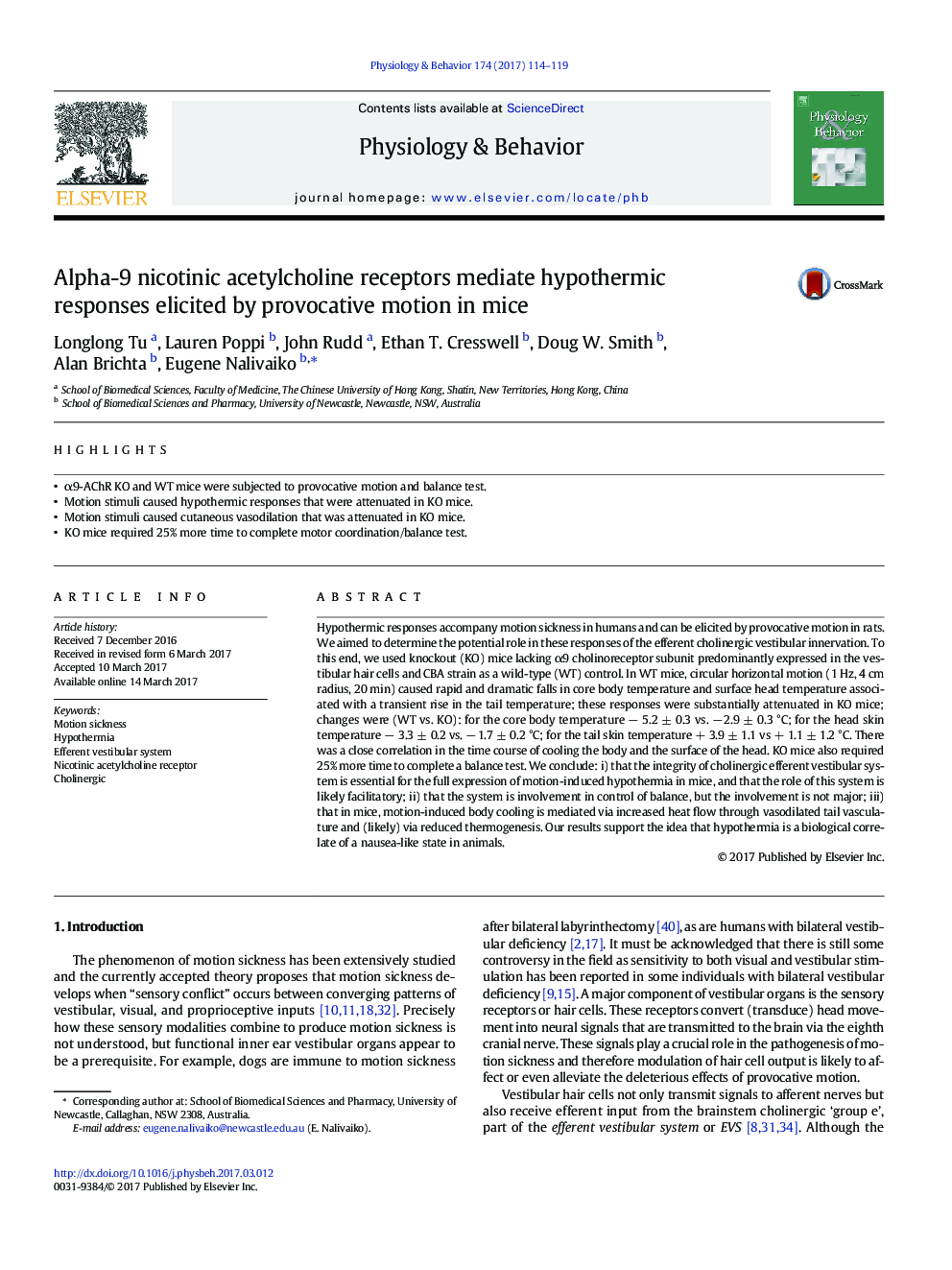| Article ID | Journal | Published Year | Pages | File Type |
|---|---|---|---|---|
| 5593704 | Physiology & Behavior | 2017 | 6 Pages |
Abstract
Hypothermic responses accompany motion sickness in humans and can be elicited by provocative motion in rats. We aimed to determine the potential role in these responses of the efferent cholinergic vestibular innervation. To this end, we used knockout (KO) mice lacking α9 cholinoreceptor subunit predominantly expressed in the vestibular hair cells and CBA strain as a wild-type (WT) control. In WT mice, circular horizontal motion (1 Hz, 4 cm radius, 20 min) caused rapid and dramatic falls in core body temperature and surface head temperature associated with a transient rise in the tail temperature; these responses were substantially attenuated in KO mice; changes were (WT vs. KO): for the core body temperature â 5.2 ± 0.3 vs. â 2.9 ± 0.3 °C; for the head skin temperature â 3.3 ± 0.2 vs. â 1.7 ± 0.2 °C; for the tail skin temperature + 3.9 ± 1.1 vs + 1.1 ± 1.2 °C. There was a close correlation in the time course of cooling the body and the surface of the head. KO mice also required 25% more time to complete a balance test. We conclude: i) that the integrity of cholinergic efferent vestibular system is essential for the full expression of motion-induced hypothermia in mice, and that the role of this system is likely facilitatory; ii) that the system is involvement in control of balance, but the involvement is not major; iii) that in mice, motion-induced body cooling is mediated via increased heat flow through vasodilated tail vasculature and (likely) via reduced thermogenesis. Our results support the idea that hypothermia is a biological correlate of a nausea-like state in animals.
Keywords
Related Topics
Life Sciences
Biochemistry, Genetics and Molecular Biology
Physiology
Authors
Longlong Tu, Lauren Poppi, John Rudd, Ethan T. Cresswell, Doug W. Smith, Alan Brichta, Eugene Nalivaiko,
